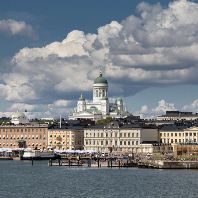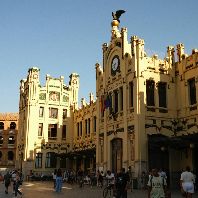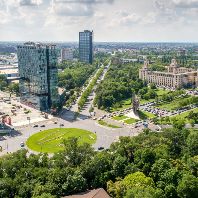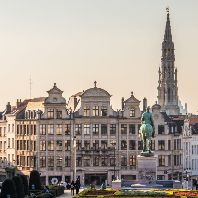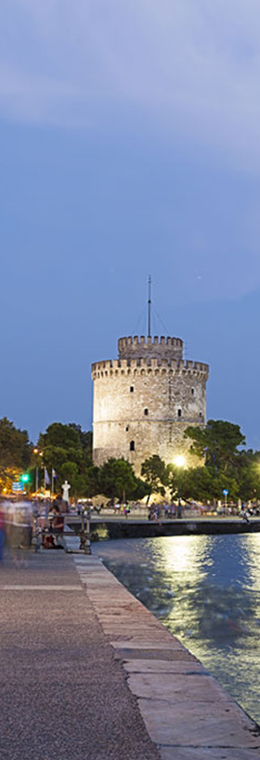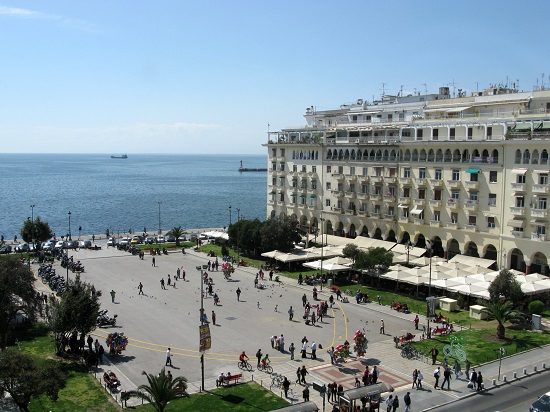 Economic Outlook After six years of continuous economic crisis that resulted in a cumulative decline in GDP by 25%, 2014 marked the return of the Greek economy to positive territory with a growth rate of 0.8%. Driving forces were the increase in exports of goods and services and the growth in private consumption. The momentum the economy had gained was interrupted during Q4 of 2014 by the increased uncertainty in the political environment. The announcement of early elections along with the negotiations with the EU, ECB and IMF lead, once again, to economic instability. The outcome of these negotiations will be the main determinant for the country’s economy. If these uncertainties are mitigated, the economy can and should continue its recovery path in 2015.
Economic Outlook After six years of continuous economic crisis that resulted in a cumulative decline in GDP by 25%, 2014 marked the return of the Greek economy to positive territory with a growth rate of 0.8%. Driving forces were the increase in exports of goods and services and the growth in private consumption. The momentum the economy had gained was interrupted during Q4 of 2014 by the increased uncertainty in the political environment. The announcement of early elections along with the negotiations with the EU, ECB and IMF lead, once again, to economic instability. The outcome of these negotiations will be the main determinant for the country’s economy. If these uncertainties are mitigated, the economy can and should continue its recovery path in 2015. 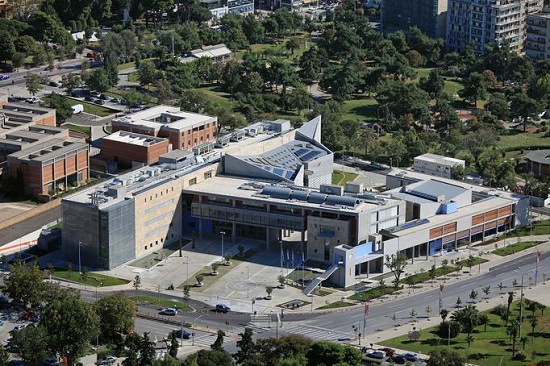 Investment Market The commercial real estate market of Thessaloniki is relatively small, offering few investment opportunities, particularly in the office and retail sectors. However, during 2014 the market has attracted opportunistic invertors’ interest (predominantly domestic) looking for high yielding properties at discounted prices. Interest is mainly concentrated on the hotel & leisure industry. Plans for linking the city to Europe and the Balkans via international roads and railways along with intentions for privatizing the Thessaloniki airport and port, will boost the city’s geopolitical and strategic location standing.
Investment Market The commercial real estate market of Thessaloniki is relatively small, offering few investment opportunities, particularly in the office and retail sectors. However, during 2014 the market has attracted opportunistic invertors’ interest (predominantly domestic) looking for high yielding properties at discounted prices. Interest is mainly concentrated on the hotel & leisure industry. Plans for linking the city to Europe and the Balkans via international roads and railways along with intentions for privatizing the Thessaloniki airport and port, will boost the city’s geopolitical and strategic location standing.  Office Market Rental levels in the Thessaloniki office market fell during the six years of the crisis by almost 40%. Signs of stabilization appeared in 2014. The Thessaloniki office market includes four distinctive areas; CBD, Eastern Entrance to the city, Western Entrance and Kalamaria. The CBD is concentrated on Tsimiski, Mitropoleos and Egnatias streets. Being the traditional office location, rents range between €6-€9/m²/month, while the vacancy rate is close to 15%. The stock of office space in the CBD is over 40 years old and consists of small units (100 m² - 200 m²). In the western part and particularly on 26is Octomvriou there is Grade A office space (Porto & Atrina Business Centers) between €5-€7/m²/month. Grade A space is also found in the eastern side, commonly known as the ‘Cosmos Business Area’ with rents equal to that of the west. Vacancy rates in these areas reach c. 20% with landlords offering incentives and accepting reductions on rent. Yields on Grade A and Grade B offices are at levels of 8.5% and 9.0% respectively. A new development in Thessaloniki is in the pipeline. Domotechniki S.A. is planning the construction of a bioclimatic complex of twin buildings of modern office and residential space in the heart of the city (€10 mln. investment).
Office Market Rental levels in the Thessaloniki office market fell during the six years of the crisis by almost 40%. Signs of stabilization appeared in 2014. The Thessaloniki office market includes four distinctive areas; CBD, Eastern Entrance to the city, Western Entrance and Kalamaria. The CBD is concentrated on Tsimiski, Mitropoleos and Egnatias streets. Being the traditional office location, rents range between €6-€9/m²/month, while the vacancy rate is close to 15%. The stock of office space in the CBD is over 40 years old and consists of small units (100 m² - 200 m²). In the western part and particularly on 26is Octomvriou there is Grade A office space (Porto & Atrina Business Centers) between €5-€7/m²/month. Grade A space is also found in the eastern side, commonly known as the ‘Cosmos Business Area’ with rents equal to that of the west. Vacancy rates in these areas reach c. 20% with landlords offering incentives and accepting reductions on rent. Yields on Grade A and Grade B offices are at levels of 8.5% and 9.0% respectively. A new development in Thessaloniki is in the pipeline. Domotechniki S.A. is planning the construction of a bioclimatic complex of twin buildings of modern office and residential space in the heart of the city (€10 mln. investment). 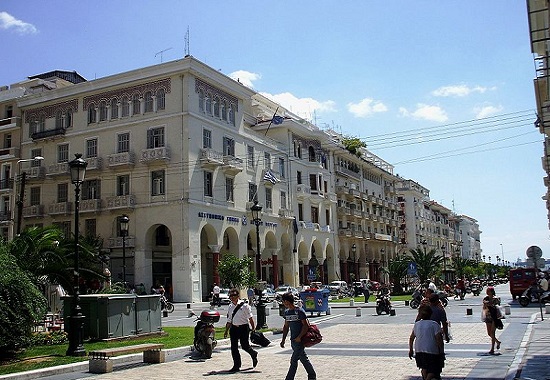 Retail Market The prolonged recession and the high levels of unemployment placed high pressure on retail trade in Greece. As a result, rental levels decreased even on prime high streets and landlords begun offering better incentives to potential tenants.
Retail Market The prolonged recession and the high levels of unemployment placed high pressure on retail trade in Greece. As a result, rental levels decreased even on prime high streets and landlords begun offering better incentives to potential tenants.
High street retailing in Thessaloniki is concentrated in the city center, on Tsimiski and Mitropoleos streets. Vacancy rates are low (c. 3%) as secondary brands exploited the opportunity of entering prime locations for lower rents. This does not apply to secondary locations such as Kalamaria, Toumpa, Evosmos and Eptalofos, where vacancy rates rose to almost 20%. Rents in prime locations range between €60-€120/m²/month while in secondary areas from €30-€40/m²/month. Prime yields for retail properties stand at 7%. The bigger players include ZARA, Benetton, Public, M&S and H&M. In 2014 the Thessaloniki retail market welcomed the department store Attika in a 7,250 m² building, the electrical appliances chain Kotsovolos on a 600 m2 store and the relocation of H&M to a 2,592 m² building in the heart of the city center. Lastly, in the high street market the F&B industry is trending. There are no new developments in the pipeline at the moment.
Thessaloniki has 4 shopping centers, with the largest being Mediterranean Cosmos and two outlets. Shopping centers were less affected by the crisis and managed to retain rents at high levels. Mediterranean Cosmos announced a 4% increase in revenues and a 5% increase in the number of visitors for 2014, while its occupancy rate rose to 99.3%. The largest outlet in Thessaloniki formerly known as City Gate, will re-open in 2015 as a retail and entertainment park named ONE SALONIKA Designers Outlet that will include a hypermarket, cinema, restaurants and retail stores over 30,000 m² GLA.
 Industrial/Logistics Market The industrial and logistics market of Thessaloniki is characterized by the owner-developer-occupier concept. The market is concentrated in the Industrial Park of Sindos, Agios Athanasios area and locations with immediate access to the port and international road links (E75, E79). Rents range between €1.5-€2.5/m²/month for prime properties and €0.5-€1.5/m²/month for secondary with yields of 10%-11%. In 2014, Lidl introduced its largest logistics center in Europe with a total area of 200,000 m2. The ultramodern distribution and storage center located in Sindos is energy independent, connected to the railway and costs €35 mln. The logistics sector of Thessaloniki has good potential to become an international hub given the privatization plans for the Port of Thessaloniki and projects in the railway and motorway connections.
Industrial/Logistics Market The industrial and logistics market of Thessaloniki is characterized by the owner-developer-occupier concept. The market is concentrated in the Industrial Park of Sindos, Agios Athanasios area and locations with immediate access to the port and international road links (E75, E79). Rents range between €1.5-€2.5/m²/month for prime properties and €0.5-€1.5/m²/month for secondary with yields of 10%-11%. In 2014, Lidl introduced its largest logistics center in Europe with a total area of 200,000 m2. The ultramodern distribution and storage center located in Sindos is energy independent, connected to the railway and costs €35 mln. The logistics sector of Thessaloniki has good potential to become an international hub given the privatization plans for the Port of Thessaloniki and projects in the railway and motorway connections.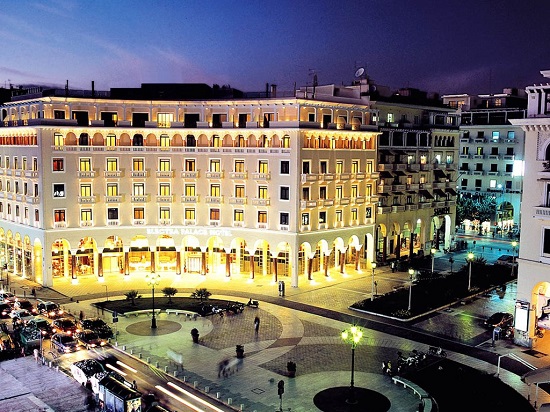 Hotel Market Thessaloniki has been attracting an increasing number of international visitors over the past several years, stemming from both the business and leisure segments, shifting the mix from being dominantly domestic to a more even split. The majority of international visitors originate from the Balkan and South-Eastern European countries, where there has been a targeted marketing effort to promote the city’s numerous cultural assets and tourist sites.
Hotel Market Thessaloniki has been attracting an increasing number of international visitors over the past several years, stemming from both the business and leisure segments, shifting the mix from being dominantly domestic to a more even split. The majority of international visitors originate from the Balkan and South-Eastern European countries, where there has been a targeted marketing effort to promote the city’s numerous cultural assets and tourist sites.
The city’s hotel supply totals 137 hotels with just over half being three-star or higher, that represents approximately three quarters of the total rooms (c. 7,700) available. There is a limited presence of international brands with only Hyatt and InterContinental operating in the city. Occupancy rates range between 50% and 60% annually, following a rather typical city seasonality pattern of higher occupancies at the beginning of each season, excluding winter. The general trend in the past several years, within the above mentioned range, has been an increase in occupancy rates coupled with a decrease in average room rates, with ARR approximations for five star hotels at €87, €52 for four stars and €42 for three stars.
A number of infrastructure developments to be completed in the next few years, including a newly-built metro system and tram line, as well as the expansion of the airport runway that will allow for landing of transatlantic flights, will enhance the city’s attractiveness and international arrivals.
If you would like to promote your city, please contact media@europe-re.com.



